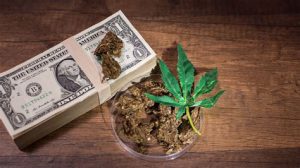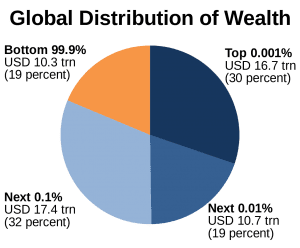
Mob Mentality Psychology: Learning for Profit
Updated April 22, 2024
Have you ever been sucked into a collective mentality that goes against your principles and beliefs? This phenomenon, known as mob mentality, has been observed throughout history in various contexts, ranging from peaceful protests to violent riots. Mob mentality has led to both positive and negative outcomes. The concept of mob mentality, its causes, and some of the more egregious cases in recent history will all be covered in this article.
Are you familiar with the term “mob mentality”? Mob mentality, or herd mentality, refers to a state of mind in which group members lose their autonomy and decision-making abilities due to the group’s influence. This phenomenon is often observed when emotions are heightened, and people feel a sense of anonymity and safety in numbers. The group may act based on a shared belief or ideology or due to peer pressure.
In a group setting, individuals may feel a sense of anonymity that can lead to decreased personal responsibility and a willingness to engage in behaviours they might not otherwise. This can result in the group adopting extreme behaviours, attitudes, and beliefs.
Mob mentality is a social phenomenon observed in various contexts, including social media, politics, religion, and sports. It’s worth noting that mob mentality is not always negative and can be harnessed for positive change. However, when it turns negative, it can have serious consequences.
Unraveling the Mob Mentality: Key Contributing Factors
Mob mentality, or herd mentality, is a fascinating phenomenon where individuals in a large group often act differently than they would individually. Several key factors contribute to this behaviour:
1. Anonymity and Deindividuation Being part of a large crowd can provide a sense of anonymity, leading to a diminished sense of personal responsibility and loss of individual identity. This anonymity encourages individuals to engage in behaviours they typically avoid, such as violence or vandalism, as their actions are less likely to be attributed to them.
2. Desire for Social Acceptance and Conformity: People have an innate desire to fit in and be accepted by the group. This drive for conformity can override personal beliefs and values, leading individuals to adopt the group’s actions, even if they are harmful or unethical. Conformity is particularly pronounced when the group behaviour is seen as the norm or when disagreeing with the group poses a risk.
3. Influence of Strong Leaders: The presence of a charismatic or influential leader can amplify the effects of mob mentality. Leaders can profoundly influence group behaviour, encouraging followers to adopt more extreme behaviours or beliefs. Research suggests that in a mob, a small population makes informed decisions that others conform to, potentially leading to more extreme and less rational group behaviour as the group grows larger.
These factors contribute to the formation and perpetuation of mob mentality, where individuals may engage in behaviours they typically avoid when acting alone. Understanding these dynamics is crucial for mitigating the adverse effects of mob mentality and fostering more constructive group interactions.
It’s worth noting that while mob mentality is often associated with harmful behaviour, it can also manifest in positive social movements or mass celebrations. The key is recognizing the underlying psychological principles at play and addressing them appropriately.
Examples of Traders Going Against the Crowd
While mob mentality can be a powerful force, some traders have successfully gone against the crowd and achieved remarkable success. One notable example is **Jesse Livermore**, a legendary trader who made millions by identifying and capitalizing on market trends that went against the prevailing sentiment. Livermore famously shorted the market during the 1929 crash, making a fortune while others suffered massive losses.
Another example is Paul Tudor Jones, who made a fortune by correctly predicting and betting against the 1987 stock market crash. Jones recognized the market’s overvaluation and took a contrarian position, ultimately profiting from the crash while many others were caught off guard.
These examples demonstrate that while mob mentality can be powerful, skilled and disciplined traders can go against the crowd and succeed by identifying and capitalizing on market trends that contradict the prevailing sentiment.
How Does Mob Mentality Work?
Mob mentality is a fascinating and intricate phenomenon that arises when individuals perceive themselves as part of a larger group. While gathering in crowds can foster positive social bonding, it also triggers specific psychological mechanisms that can lead to irrational and extreme behaviours. Throughout history, mob mentalities have been observed in various contexts, ranging from violent criminal acts to online witch hunts.
These instances demonstrate how otherwise sensible individuals can engage in harmful and illogical actions when swept up in the energy of a crowd. However, delving into the root causes of this effect offers valuable insights into human social psychology and provides avenues for preventing adverse outcomes. By examining anonymity, group influence, and identity, we can better understand why mob mentality forms and how societies can discourage and mitigate its potential for escalating into dangerous or unlawful directions.
The Role of Anonymity
Anonymity plays a pivotal role in fueling mob mentality. When individuals cannot be uniquely identified in a crowd, it diminishes their sense of personal accountability. This reduced sense of responsibility can lead to a loosening of inhibitions and an increase in impulsive behaviour. Neuroscientific research has revealed that anonymity in crowds activates specific brain regions associated with risk-taking, excitement-seeking, and disinhibition.
These neurological processes contribute to instances where participants typically refrain from violence and engage in destructive acts, attacking and damaging property. Moreover, the cloak of anonymity allows individuals to express biases and prejudices that they may otherwise suppress in their everyday lives when their identity is known. The anonymity the group setting provides unleashes hidden impulses that can fuel irrational or extreme positions, particularly when combined with influences like propaganda or crisis events.
The Power of Group Influence: A Deep Dive into Mob Mentality
The power of group influence is pivotal in shaping human behaviour, particularly in mob mentality. Individuals who are part of a crowd may experience a reduced sense of personal responsibility and an increased tendency to conform to group norms, leading to actions they might not take on their own. This susceptibility to the group’s influence is a form of conformity, a social force that can cause individuals to adopt the crowd’s beliefs and behaviours without thorough personal evaluation.
Groupthink is a critical manifestation of this, where the pursuit of unanimity trumps the motivation to appraise alternative courses of action realistically. It can lead to amplified emotions and actions, often pushing them to extremes. The presence of a charismatic leader or a substantial group identity can further intensify this collective mindset.
Group polarization, another facet of group dynamics, refers to a group’s tendency to make more extreme decisions than its members’ initial inclinations. This can be driven by social comparison, where individuals adjust their opinions to align with the perceived group norm, and by exchanging persuasive arguments that are typically one-sided within homogeneous groups.
Despite potential adverse outcomes, such as mob mentality, group influence can drive positive social change and innovation. The key to harnessing the positive aspects of group influence lies in fostering environments that encourage critical thinking, individual accountability, and open communication.
In the context of the stock market, these psychological dynamics can lead to irrational decision-making, as seen when investors follow the herd during periods of market volatility, often resulting in suboptimal financial outcomes. Understanding these influences can empower individuals to resist the pull of the crowd and make more informed decisions, whether in social settings or financial markets.
Navigating these complex social dynamics requires a nuanced understanding of human psychology and a commitment to maintaining individual judgment within the powerful currents of group influence.
The Psychology of Deindividuation
Deindividuation is a psychological phenomenon where individuals in a crowd lose their self-awareness, often resulting in impulsive and deviant behaviour. This state emerges as cognitive control, typically governed by the prefrontal cortex, diminishes. In the heat of collective action, rational judgment takes a back seat to primal impulses, leading to actions that might be regretted in a more reflective state.
As personal identity fades within the crowd, suppressed frustrations can emerge, sometimes directed at an identified adversary, exacerbating the intensity of the group’s actions. This process underscores the crowd’s transformative power on individual behaviour, shedding light on how peaceful gatherings can sometimes spiral into chaos.
Social Identity and Collective Behavior
Social identity theory explores how group affiliations shape individuals’ self-concepts. Within a group setting, identification with the collective can become so strong that it significantly alters perceptions and choices. The desire to uphold a positive view of the group can override objective analysis, leading to decisions that prioritize group validation over pragmatic considerations.
Conformity cements an individual’s standing within the group but can lead to the adoption of extreme positions. As members align themselves with the group’s ideology, the urge to maintain social harmony can trump the value of independent thought, resulting in collective stances that reflect the group’s identity rather than individual reasoning.
Both deindividuation and social identity theory reveal groups’ profound impact on individual behaviour. By understanding these psychological underpinnings, we can better equip ourselves to foster environments that emphasize critical thinking and value individual perspectives, thus mitigating the risks of group-induced extremity.
Vivid Examples of Mob Mentality in Action
Across history, specific, dramatic incidents have brought into sharp focus how easily mob rule can seize entire populations. When fear, anger, or excitement surge within a cohesive crowd, individual rationality can give way to the irrational, collective logic of shared emotions. The following infamous events provide chilling yet enlightening insights into the rawest forms of mob psychology. Whether incited through mass hysteria, the enthusiasm for revolution, or the commercialized chaos of Black Friday, each example vividly illustrates the psychological factors that can turn ordinary citizens into an unthinking, volatile swarm with devastating consequences. This discussion will cover these topics and more, showcasing mob mentality.
1. The Salem Witch Trials (1692)
2. The French Revolution
3. The Stanford Prison Experiment (1971)
4. Black Friday Sales
5. Cyberbullying and more
The Salem Witch Trials
In 1692, accusations of witchcraft erupted in Salem like wildfire. It started with two girls experiencing bizarre fits, but soon more began alleging bewitchment. As fear and paranoia ripped through the colony, over 200 people stood accused. Trials were a sham – “spectral evidence” and insinuation was enough for conviction. By October, 19 had been hanged at Gallows Hill, including 81-year-old Giles Corey, who was pressed to death for his refusal to plead. As the madness mounted, even the accusers’ physician was charged for objecting to the proceedings. While few today believe the supposed victims were truly bewitched, the mass hysteria highlights how easily mob rule can overtake reason during periods of societal strain.
The French Revolution
“Liberty, equality, fraternity” was the cry, yet the Reign of Terror showed how quickly revolution can turn tyrannical. With the monarchy overthrown and radicals controlling Paris, mob violence engulfed the city streets. The guillotine’s blade fell swiftly and relentlessly, severing over 16,000 heads, including former allies like Danton and Robespierre. As paranoia about “enemies of the people” gripped the Committee of Public Safety, no one felt safe voicing dissent against the evolving orthodoxy. With chaos threatening to tear apart republican France before its birth, leaders inflamed public sentiment for repression to defend the revolution. Yet, by fueling mob rule, they jeopardized liberty itself and laid seeds for future reactionary backlash.
The Stanford Prison Experiment
In the summer of 1971, psychologist Philip Zimbardo unleashed one of psychology’s most chilling and unethical experiments. He converted a basement into a mock prison, casting college students randomly as guards and prisoners. Within days, the whereabouts were unrecognizable as good-natured peers morphed into sadistic rulers and cringing inmates. Zimbardo hypothesized that situation and social roles shape behaviour more than character, and the results proved alarming. As captors flexed their newfound authority through humiliation rituals and forced work details, captives showed signs of resignation syndrome. The experiment highlighted how easily individuals can abandon morality and surrender autonomy when subsumed within a cohesive, dominant collective mindset.
Black Friday Sales
Every year on the day after Thanksgiving, a twisted spectacle unfolds – the Black Friday feeding frenzy. Hordes of eager shoppers storm retail stores in fierce competition, trampling over others for deals indistinguishable from those available online without the dystopian theatrics. In 2008, at a Long Island Walmart, one customer was fatally crushed as a mob of 2,000 rushed through steel barricades. Though most Black Fridays steer clear of lethal outcomes, the mindless consumerist pandemonium illustrates mob psychology principles at their highest base: identity dissolution in the anonymous crowd, conformity to the swarming hive, reduced impulse control, and subordination of individuality to mob conformity. For retailers, inciting this irrational carnival is a calculated gamble on profits over public safety.
Cyberbullying
The rise of social media brings renewed opportunities for online mobbing as bullying follows youth into cyberspace. Via platforms like Facebook, Instagram and Snapchat, faceless groups coordinate attacks on lone victims to devastate self-esteem and sometimes push targets to suicide. While anonymity grants brave keyboard warriors unaccountability for their actions, researchers find cyber-aggressors often behave more harshly than they would in person. Combined with the perpetual online access and massive audiences social networks provide, this enables campaigns of around-the-clock psychological torment that spill over schoolyards into private lives. Every “like” and share augmenting the swarm further, cyberbullying demonstrates how mental well-being can fall prey to pack instincts unleashed online absent real accountability or human empathy.
The “Tide Pod Challenge
What started as an online joke spiralled disastrously out of control. Posts of teens popping the brightly coloured pods surfaced on social media, egging others into attempting the potentially lethal stunt. Impressionable youth succumbed to peer pressure, drawn to the allure of social media notoriety. Public health warnings failed to penetrate networks abuzz about the “latest challenge.” Parents were left helpless to the viral swarm of compelling, reckless acts as hospitalisations mounted. The ordeal spotlighted social media’s power to hijack even rational faculties for likes and shares, normalizing hazardous dares. It proved anonymous crowds can validate dangerous ideas beyond all reason, imperilling unsuspecting followers. Though intended in jest, this craze demonstrated journalism’s role in diffusing online pandemics before lives are lost to the misguided quests of the digitally spurred mob.
The Wall Street Bets Movement
When retail investors united their bandwidth, Wall Street shook. Coordinating on Reddit’s “WallStreetBets” forum, smaller shareholders banded talents to identify heavily shorted stocks. They pooled buying power to drive demand for GameStop and other “meme stocks,” knowing the short positions left significant funds exposed to cascading losses. Despite being outspent and lower in numbers, the swarm’s precision strategy paid off. As stock prices skyrocketed contrary to expectations, short sellers scrambled to close losing positions, turbocharging gains further. Although some players lost significantly, many average investors saw huge profits. The collective effort highlighted a potential development – when the people recognize shared interests and mobilize resources through accessible avenues, even mighty institutions can be challenged on their turf.
The Rwandan Genocide
From April to July 1994, interethnic hatred was unleashed on a genocidal scale. Propaganda campaigns by extremist Hutu leaders had long inflamed tensions between the Hutu majority and minority Tutsi population. After the president’s plane was shot down, trigger events like roadblocks and weapons distribution primed widespread massacres. Ordinary citizens turned on neighbours in brutal violence, fueled by beliefs in Tutsi threat and rewards for participation. Incremental civilian involvement normalized the unthinkable as killing became contagious through proximity and group-compelled compliance. United Nations ignored pleas for help. By the war’s end, over 800,000 Rwandan citizens lay dead. The catastrophic human toll is a sobering lesson in how easily racism, disinformation and mob rule can morph a society into a murderous frenzy, causing irreversible tragedy.
The Dancing Plague of 1518
In the German city of Strasbourg, a mysterious epidemic of uncontrollable dancing overtook hundreds during the summer of 1518. Reports described people dancing incessantly day and night, many collapsing from exhaustion. Though origins remain unclear, speculation included ergot poisoning, mass psychogenic disorder or religious ecstatic rituals. Social contagion fanned the phenomenon’s flames as more joined in the erratic movements. Within a month, around 400 had suffered fates of fatally dancing themselves to death. As medical care was sparse, onlookers could only watch the enthralled dancers drop one by one until vigilantes hid their clothes to end the locomotive compulsions. This implausible occurrence highlights humanity’s suggestibility and our capability to mimetically adopt others’ strange behaviours en masse for reasons we may never fathom, even in retrospect.
The January 6th Capitol Riot
On January 6th 2021, political division climaxed into a violent insurrection unlike anything witnessed in modern America. Thousands heeded calls to “Stop the Steal” as baseless claims of election fraud spread. Emboldened by provocative oratory, the mob streamed towards the halls of government with intentions to subvert democratic processes. Unprepared law enforcement was quickly overwhelmed by the swarming patriots incensed with a perverse sense of justice. Unrestrained rioters desecrated the marble temple of the legislature with Confederate flags and patriotic paraphernalia, hunting elected leaders in a twisted quest for vengeance. While some saw fighting for a cause, most experts characterized the harrowing events as a predictable outcome when agitators skillfully activate tribal instincts of crowd psychology for radical ends threatening the foundations of society. The alarming events demonstrated mob rule’s destructive potency when political actors weaponize partisan polarization to explosive effect.
The Manipulation of Mob Mentality: Unveiling the Dark Arts of Influence
Indeed, mob mentality can certainly be influenced and manipulated by external factors such as media and propaganda. Here are some ways this can occur:
– Framing of issues/events: How an event or social subject is framed in the media can influence how groups interpret it and polarize their views. Propaganda often uses selective framing to assign blame or stoke emotions.
– Amplification of fears/threats: Exaggerating threats, whether real or imagined, can activate the “fight or flight” instinct in groups, making them more reactive and prone to mob-like behaviour. Misinformation is often spread this way.
– Simplification of complex issues: Reducing multidimensional problems to overly simplistic narratives of “us vs them” facilitates the formation of antagonistic ingroup/outgroup narratives ripe for mob behaviour.
– Declarative & emotive language: Using robust, resolute language laden with emotional buzzwords rather than nuanced discussion fuels automatic, reactive thinking over systematic reasoning. This serves propaganda goals.
Peer pressure and social proof: When indirectly pressured by cues that “many others believe/are doing X,” individuals are more likely to conform to the perceived norms of the emerging crowd/mob.
– Dehumanization of opponents: Depicting rival groups in subhuman, threatening terms stirs “fight or flight” instincts and justifies extreme, reactive countermeasures in the popular imagination.
So, in summary, external sources can exploit known triggers of mob psychology like enhanced emotions, reduced critical thinking, and heightened social influence/identities to guide crowd reactions for political or ideological aims covertly. Understanding these dynamics is crucial in developing media literacy.
Strategies for Mitigating Mob Mentality
Mitigating the impact of mob mentality is essential for preserving societal harmony and justice. Institutions can play a pivotal role in reducing the negative consequences of crowd behaviour by implementing targeted strategies.
Emphasizing Personal Responsibility
Highlighting individual accountability is a cornerstone in combating mob rule. When people are encouraged to reflect on their actions and the ethical implications, they are less likely to engage in behaviour that contradicts their values. This emphasis on personal responsibility can deter individuals from succumbing to the pressures of the crowd.
Cultivating Rationality and Autonomy
Encouraging critical thinking and independent judgment is vital for empowering individuals to scrutinize prevailing narratives and form their own opinions based on evidence. A culture that prizes rationality and intellectual independence can diminish the allure of groupthink and impulsive actions.
Building Empathy and Compassion
Developing empathy and understanding across diverse groups can dismantle the “us versus them” mentality that fuels mob behaviour. By promoting compassion and tolerance, individuals can learn to appreciate different perspectives, fostering cooperation and peaceful coexistence.
Encouraging Open Dialogue
Creating spaces for open dialogue and respectful disagreement can prevent the formation of echo chambers. When diverse opinions are welcomed and civilly debated, it encourages a culture of critical discourse and diminishes the likelihood of harmful mob mentalities taking root.
Promoting Evidence-Based Information
In a world of misinformation, prioritizing evidence-based information and teaching individuals to fact-check claims is crucial. This approach equips people with the skills to critically evaluate information, reducing the chance of false narratives inciting crowd behaviour.
By adopting these strategies, societies can nurture an environment that values individual thought, informed decision-making, and ethical behaviour. It’s a collective endeavour to counteract the factors contributing to mob mentality and foster a society where justice and rationality prevail.
The goal overall is cultivating a psychologically literate, pluralistic, and inclusive society where mob mentalities have fewer divides to exploit and ignite harmful behaviours.
Conclusion
Mob mentality is a potent social force with positive and negative consequences. It can result in positive social change and collective action but can also lead to irrational behaviour and violence. Understanding the causes of mob mentality can help us navigate situations where we may be vulnerable to its effects. By staying mindful of our values and beliefs, we can prevent ourselves from being swept up in the herd mentality and make informed decisions based on our judgment.
It refers to the tendency of individuals in a group to abandon their critical thinking and adopt a herd mentality. In a group setting, individuals may feel pressured to conform to the group’s behaviour and opinions, even if they don’t necessarily agree with them. The concept of mob mentality can be observed in many contexts, including social media, politics, and sporting events. This post will delve deeper into this phenomenon and examine some of its most spectacular manifestations of strength and impact.
Mob mentality is a complex phenomenon that requires a multifaceted approach to address. We can prevent adverse outcomes and promote positive change by fostering individual responsibility, encouraging critical thinking and dialogue, and promoting empathy and community. By doing this, we may use the strength of group action for the common benefit.
Therefore, the next time you find yourself in a group setting, be aware of the group’s attitudes and beliefs and challenge them if necessary. Remember that your individuality and critical thinking skills are valuable assets, and don’t hesitate to use them. By doing so, you can resist the pull of mob mentality and contribute to positive change in your community and beyond.
A World of Ideas: Articles That Will Expand Your Horizons

Negative Retained Earnings on the rise in the technology sector

Fed Tapering: To Party or not to Party?

Market Sentiment: Is Turning too bullish

Perception Management: Don’t fight the Trend

Margin Debt: Is it out of control?

Why Stock Market Cycles Indicate the Need for Caution

ABMD Stock Price Forecast for 2020 & Next Few Years

Why the Dollar and US Stock Market Could Rise Together

How To Add Images To PHPBB Forum

Stock market trend 2022: Analyzing Opportunities & Risks

Cannabis Market Growth: Unstoppable Trends & Opportunities

The Perils of Helicopter Money: Risks & Implications

401k Losing Money; 41 percent of Adults not saving for retirement
D.C. pension board ignites debate

Inequality Crisis: 62 People vs 3.6 Billion Poor
Beat Inflation: Insights from Philosophers and Contrarian Investors


